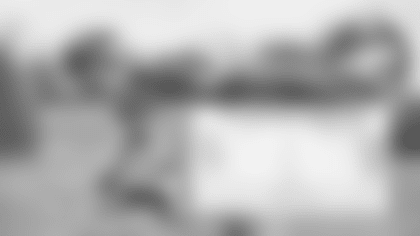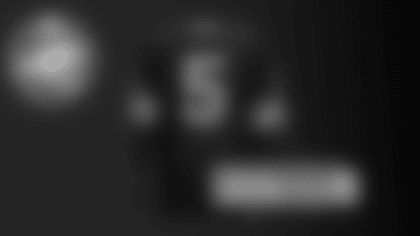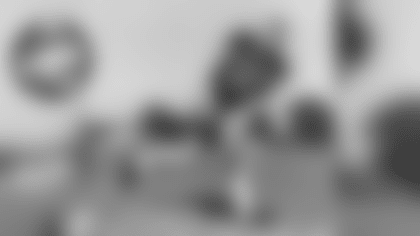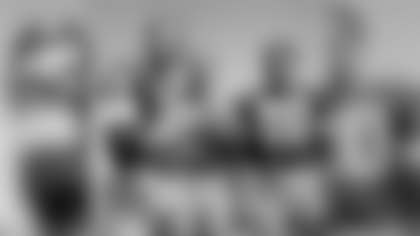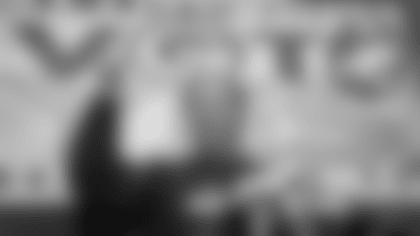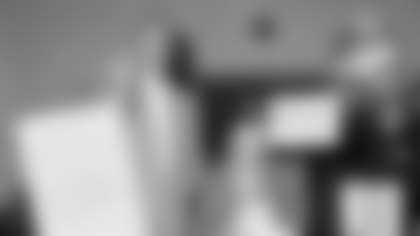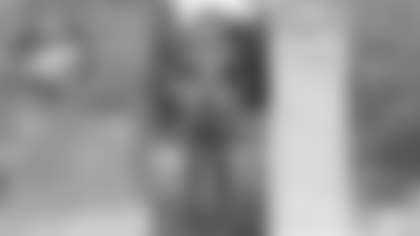Ahmed from New Berlin, WI
Do you know where on the State Fairgrounds the stadium was located? I've learned the football field was located somewhere within the Milwaukee Mile infield near to the then grandstand.
When the Packers first played at State Fair Park, the field was laid out, north and south, in front of the racetrack's old concrete grandstand, and my research suggests the field remained in that same general location throughout the 18 seasons when the Packers played there, but with at least one modification. Before the 1939 season, the field was moved 50 yards to the north to take advantage of the better seats in the north stands.
As for the grandstand on the west side of the field at State Fair Park, that was constructed in stages and even rebuilt once when the Packers played there from 1934-51. The original grandstand, built before World War I, was made of wood.
The first concrete section was constructed alongside that wooden grandstand and was completed in late 1912. Plans called for the combined old and new sections to hold nearly 20,000 people. However, two years later, the frame section of the grandstand was destroyed by fire, reducing capacity to roughly 6,000. Between 1915 and 1924, more seats were added mainly through additions.
Then in 1925, a 430-foot long, 7,000-seat new concrete grandstand was built to the north of the old concrete one.
Thus, in 1934, when the Packers agreed to play at least two games a year at State Fair Park, there were more than 12,000 seats in the concrete stands. Another 5,000-plus wooden bleacher seats were built on the east side of the park. The football field was created directly in front of the larger grandstand on the west side. State Fair management also installed a 90,000-watt lighting system that allowed the Packers to play an in-season, night game exhibition against the Bears that year.
Two years later, the original concrete grandstand, built in 1912 and facing condemnation, was razed and replaced by a new one that was part of a Works Progress Administration project. It cost $100,000-plus and held 7,200 people. In 1938, a roof and 1,200 more seats were added to the north grandstand.
At the start of the 1939 season, State Fair Park's capacity for football was 24,700, including 15,500 seats in the west stands and 6,200 on the east side. Close to 7,000 more seats were added to increase capacity to roughly 32,000 for the NFL Championship Game played there on Dec. 10 against the New York Giants.
Those added seats included folding chairs placed on the racetrack that blocked the views of thousands of fans in the lower grandstand seats on the west side and led to chaos, if not carnage. By the second half, fans with obstructed views were throwing whiskey and beer bottles into other sections of the crowd. What's more, fans who had purchased seats on the track left the folding chairs and most everything else in shambles by game's end.
I'm also curious if there was even a scoreboard for fans to view at that title game. Three days after the Packers' first game in Milwaukee that year, one that went down to the wire, a fan wrote to The Milwaukee Journal complaining that State Fair Park lacked a scoreboard. "But Mr. Ammon (State Fair manager), you forgot all about the clock and a scoreboard. We've all been aware of their absence before, but never quite as much as in the wild fourth quarter of last Sunday's high scoring game with the Cardinals. Didn't you miss the clock in those last few minutes particularly?"
In 1946, capacity was increased again to close to 34,000 permanent seats, when 12,000 steel and wooden stands were purchased from the University of Chicago, where they had been used at Stagg Field before the school dropped football. Those were erected on the east side of the field.
The wooden east stands were dismantled shortly after the Packers played their last game at State Fair Park on Oct. 21, 1951. The concrete stands on the west side were demolished in 2002.
What was it like to watch a game from across a racetrack?
In 1994, Tony Canadeo, who joined the Packers in 1941, told Tom Silverstein of the Milwaukee Sentinel: "At the Fairgrounds, the field was so far from the stands you couldn't hear the people booing you. … on the Packer side, the racetrack was between the field and the stands. That's a long way away."
Nolan Luhn, a Packers end from 1945-49, offered this recollection when I interviewed him in 2001: "You couldn't even throw a football up into the stands. There was a track around it: a trotting track, a horse track, maybe a race-car track. I know it was a long way behind the bench to the stands."
George from North Mankato, MN
I'm curious why the Packers started playing games at County Stadium in Milwaukee. What was the most important game played at County Stadium? Were you ever in attendance and, if so, do you have any particularly fond memories of those games or the stadium itself? Lastly, why did the Packers stop playing there?
The Packers moved into County Stadium in 1953, the same year the Braves moved to Milwaukee and started play there. At the time, County Stadium's seating capacity for football was 35,646, about 10,000 more than Green Bay's old City Stadium held. Actually, the Packers planned to play at County Stadium in 1952, but due to construction delays they had to scramble in late July to find another home.
What was the biggest game at County Stadium?
There were some huge regular-season games played there against Detroit, Baltimore and the New York Giants during Vince Lombardi's nine years as coach. But the most important had to be the Western Conference Championship following the 1967 regular season.
The Los Angeles Rams had finished 11-1-2, tied with Baltimore for the best record in the NFL, possessed a strong nucleus of young players and were well-coached with George Allen. On paper, they appeared to be more talented than Dallas, the team the Packers faced a week later in the Ice Bowl, and Kansas City, the team they beat in Super Bowl I. In fact, the Packers were underdogs at home in a postseason game for the only time under Lombardi.
But they dominated the Rams in a 28-7 victory, and it probably was one of the best game plans that Lombardi ever devised. As he was inclined to do, he attacked the Rams' strength, the left side of their defensive line with future Hall of Famers Deacon Jones and Merlin Olsen, and they were essentially non-factors.
I covered my first game at County Stadium on Oct. 1, 1972, when the Packers beat the Cowboys, 16-13. I was covering high school sports at the time for the Green Bay Press-Gazette and was assigned to write a sidebar on the game. From 1974-85 and again in 1987-88 after I had joined The Milwaukee Journal, I believe I covered every Packers game in Milwaukee.
The best game I saw there? Again, it was the victory over the Rams in '67. I was a 20-year-old college student, rode a train with a friend from Green Bay to Milwaukee the morning of the game and watched it from the upper grandstand in County Stadium.
The Packers left Milwaukee basically for the same reason they started playing there 62 seasons earlier: money. Over the last 10 seasons, dating to when luxury boxes were erected in Lambeau Field, the Packers lost out on about $15 million of income by playing in Milwaukee. Moreover, with 90 more boxes being added in Lambeau, their loss per season would have climbed to $2.5 million if they had played in County Stadium again in 1995.
Also, as early as 1992, his first full season as general manager, Ron Wolf had started pitching the idea of abandoning Milwaukee in conversations with team president Bob Harlan. Wolf thought it was a competitive disadvantage to have to travel for three of eight home games.
When asked about it after the Packers had beaten Philadelphia in a thrilling finish on Nov. 15, 1992, Wolf answered, "I never made an anti-Milwaukee statement. What I said was that it's just a shame we don't play more games in Lambeau Field. That's the greatest park in the National Football League. This is a baseball park."
Typical Wolf. It never took him long to cut to the core of a problem. And once Harlan settled on a way to accommodate the Milwaukee fans, who were critical to the Packers' survival, he was in agreement.
Ken from Kenosha, WI
I grew up in Milwaukee in the 1960s and '70s, so I remember vividly the Packers games at County Stadium. I'd be grateful if you commented on the other Milwaukee venues. My father told me he grew up near State Fair Park and that he and his friends could sneak in by crawling through a drainage ditch. Love your column.
Thanks. The Packers played one game at Borchert Field in 1933, and I wrote about it last week. I've also covered State Fair Park in other answers over this and my previous post.
In 1952, when the Packers had to find a temporary home for a year, they played at Marquette Stadium, which had 21,000 permanent seats with concrete stands on both the east and west sides of the field. Located at N. 35th and W. Clybourn streets, the stadium was built in 1924 when Marquette University fielded formidable football teams.
Al from St. Louis
I grew up in southeastern Wisconsin and my dad had season tickets for the games in Milwaukee. But I never asked my dad about the details of how the Packers came to play in Milwaukee. I always assumed it was for financial reasons and to spur more interest in the team, but I've now heard there was a group pushing to get an expansion franchise for Milwaukee and the Packers agreed to play there to prevent the competition.
Marv Fishman, a Milwaukee realtor, tried to secure an American Football League franchise for Milwaukee in the mid-1960s. That had nothing to do with why the Packers started playing in Milwaukee in the first place, but Lombardi and the Packers' executive committee did everything they could to block Fishman's efforts.
The AFL and NFL were in competition with each other at the time, so if the AFL had granted the city an expansion team that would have become a serious threat to the Packers' existence. And the AFL was serious about adding another Midwest city. In fact, AFL commissioner Joe Foss visited Milwaukee in late 1965 and said: "We regard Milwaukee as an open city. After all, it's the Green Bay Packers, not the Milwaukee Packers. And this is a good television market."
However, because the Packers were the kingpins of pro football at the time, the Milwaukee media and general public never bought into the idea out of fear of losing the Packers. Within the next year, the AFL and NFL agreed to a merger, and the Packers and the Milwaukee County Park commission renegotiated a seven-year contract that gave the team exclusive professional football rights to County Stadium.
Fishman then turned his attention to getting an NBA expansion franchise for Milwaukee and was successful in partnership with Wes Pavalon. That's how the Milwaukee Bucks came into being.
As a side note, in 1940 and '41, Milwaukee had a franchise in one of the early and short-lived AFLs that was named the Chiefs and played its home games at State Fair Park at the same time as the Packers.

Greg from San Ramon, CA
There's a rumor that has circulated that when productivity suffered in terms of wins and losses, the Packers considered moving to Milwaukee on a permanent basis, the thought being there would be more opportunities with corporate sponsorships, executive suites and regional exposure. Any truth or just folklore?
No, the Packers never considered moving there during their gory years, although widely acclaimed sportswriter Frank Deford suggested they consider it in a 1987, Sports Illustrated story. At the time, the Packers were in the depths of their quarter-century tailspin and appeared to have little hope of snapping out of it.
No question, many of the Packers players during that period preferred playing in Milwaukee to Green Bay. "A lot of the players, black and white, would like to be based here, play out of Milwaukee instead of Green Bay," James Lofton said in 1983. And while Wolf didn't like the idea of traveling 120 miles each way for a home game, most players going back to the Lombardi years liked playing in Milwaukee.
"Every player I know looked forward to going to Milwaukee," Bob Skoronski, captain of Lombardi's three-peat NFL champs, told Gary D'Amato of the Journal in 1994. "I remember the excellent corned beef sandwiches at Levin's after practices on Saturdays and the great dinners at Glorosio's. We had a group of fans who greeted the bus every time we played in Milwaukee. They were there religiously. We got to be good friends with many of them. Those people were among the best Packers fans I've ever seen. I have nothing but the greatest memories of Milwaukee, the fans, the stadium. I feel terrible about the Packers leaving Milwaukee. Personally, I'm almost sick about it."
Most importantly, during the 62 seasons when the Packers split their home games between the two cities, they had a .635 winning percentage in Milwaukee and .546 in Green Bay. In the 1960s, their winning percentage was .767 at County Stadium and .739 at Lambeau Field. The disparity was even greater in the dreadful 1970s and '80s. When the Packers were hard-pressed to win a game no matter where they played, they were 37-22-3 in Milwaukee and 37-48-2 in Green Bay. That's quite a difference.
Robert from Saginaw, MI
How close were the Packers to moving to Milwaukee or another location (e.g., Los Angeles) if it had not been for the 2003 expansion?
There were no serious discussions prior to the 2000 stadium referendum. But had that referendum not passed, there would have been pressure on Packers officials to look at Milwaukee and maybe southern Brown County as options to build a new stadium.
In truth, Green Bay was probably at greater risk of losing the Packers in the early 1950s after County Stadium opened and before what is now Lambeau Field was built. Fred Miller, president of Miller Brewing Co. of Milwaukee, was determined to make his hometown a big-league city.
First, he helped lure an NBA franchise to Milwaukee in 1951, then sold Braves owner Lou Perini on moving from Boston to Milwaukee in 1953. Next, Miller set his sights on getting an NFL team. While his stock purchase and sponsorship of the Packers' radio broadcasts in 1950 helped save the franchise, he also was ready to scoop up the Packers and move them if Green Bay wasn't going to build a new stadium. Miller had his eyes on both the Packers and Chicago Cardinals when he died in a plane crash in 1954.




